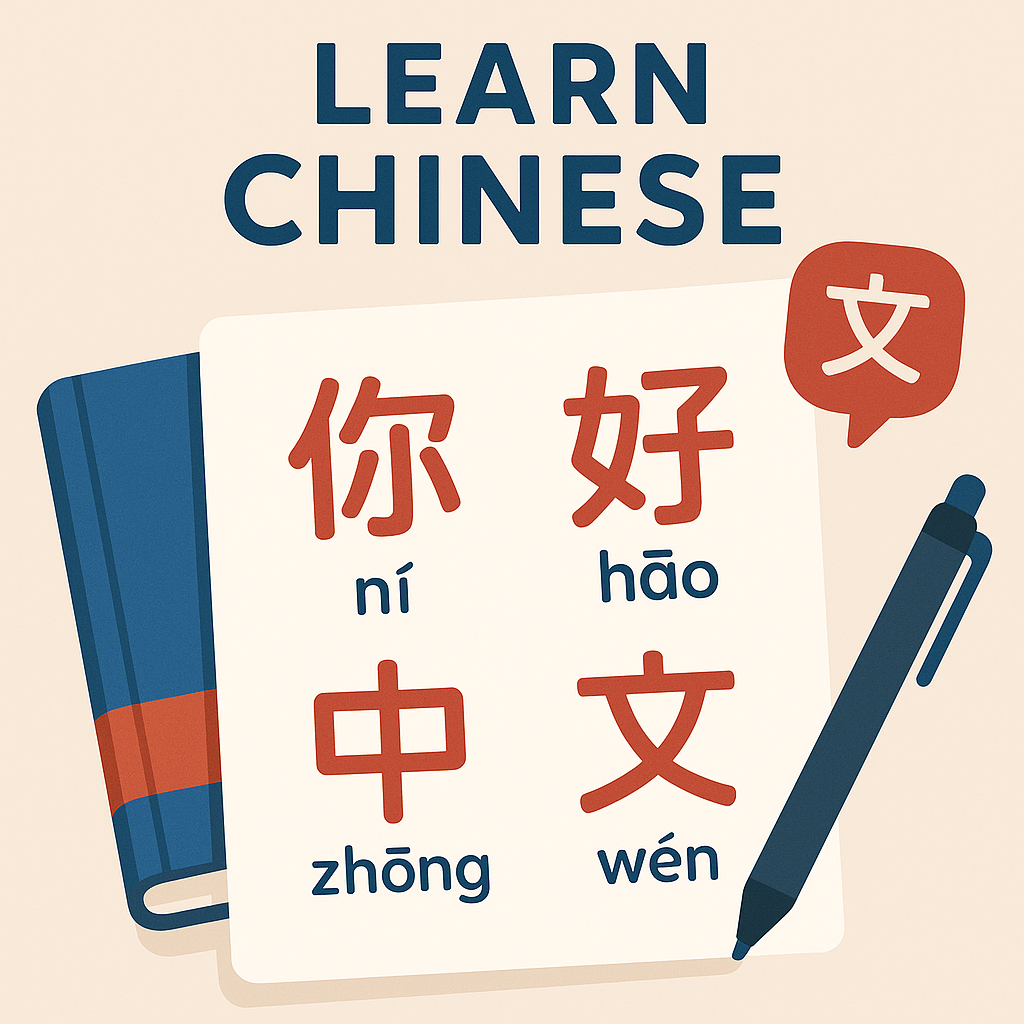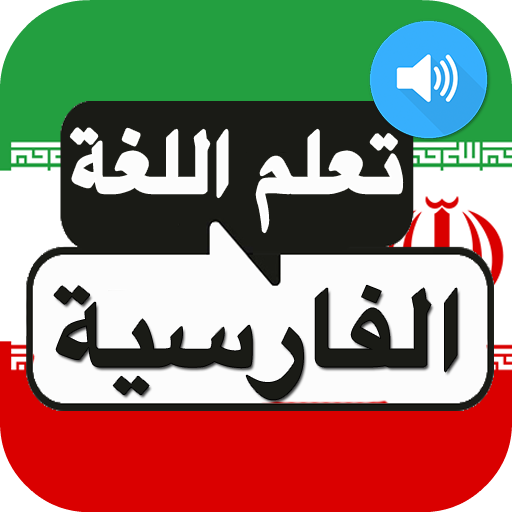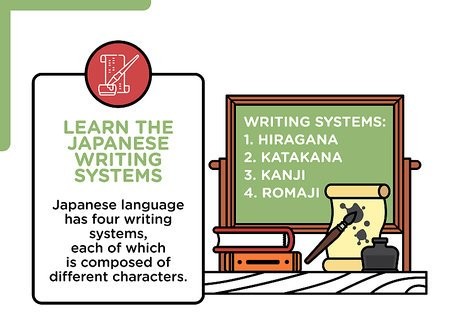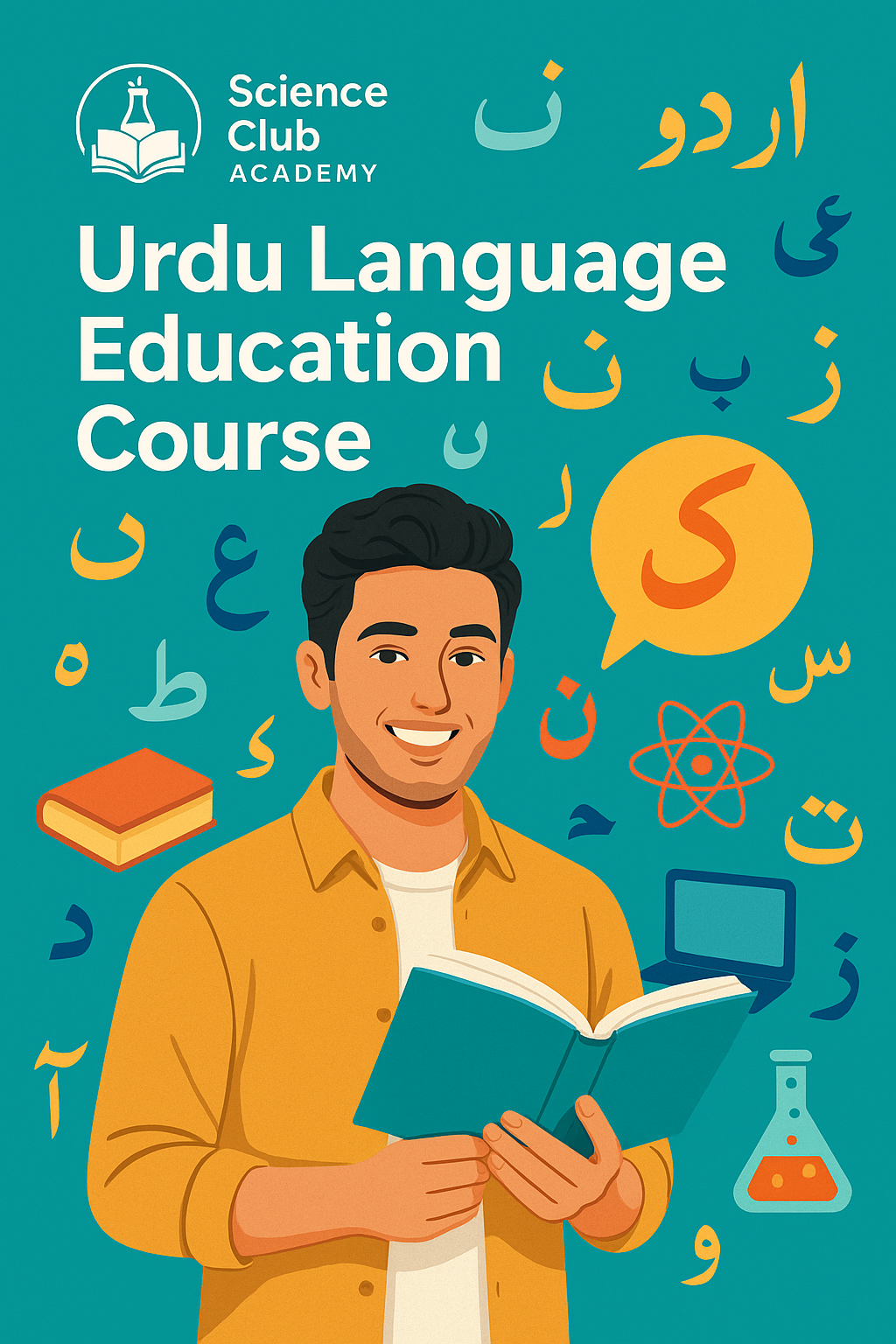
Teaching Chinese to professionalism
To classify Chinese language learning levels, you can rely on the HSK (Hanyu Shuiping Kaoshi) system, the official standard for assessing Chinese language proficiency. It consists of six levels as follows:
1. HSK 1: Very beginner level, requiring knowledge of 150 words.
2. HSK 2: Beginner level, requiring knowledge of 300 words.
3. HSK 3: Intermediate level, requiring knowledge of 600 words.
4. HSK 4: Advanced intermediate level, requiring knowledge of 1,200 words.
5. HSK 5: Advanced level, requiring knowledge of 2,500 words.
6. HSK 6: Professional level, requiring knowledge of more than 5,000 words.
Levels are divided into sessions:
- HSK 1-2: Each level requires 30-40 sessions (two to three sessions per week).
- HSK 3-4: Each level requires 40-60 sessions.
- HSK 5-6: Each level requires 60-80 sessions, due to the complexity of the vocabulary and texts.
Skills acquired after each level:
- HSK 1: Understand everyday phrases and interact at a simple level.
- HSK 2: The ability to conduct basic conversations about everyday life.
- HSK 3: Deal with more complex situations at work and school.
- HSK 4: Express ideas clearly on a variety of topics.
- HSK 5: Read long texts and understand deeper meanings.
- HSK 6: Understand Chinese almost naturally, like native speakers.
Session duration for each level:
Beginners (HSK 1-2):
45-60 minutes – because students need time to absorb the basics without becoming overwhelmed.
- Intermediate levels (HSK 3-4):
60-75 minutes – Include more in-depth conversations and exercises.
Advanced levels (HSK 5-6):
75-90 minutes – because learning involves long texts and complex discussions.
In individual sessions, the duration can be customized to the student's needs, while group sessions prefer a fixed duration.

Teaching French to professionalism
French is one of the most widely spoken languages in the world. It is the official language of more than 29 countries and is also the language of literature, culture, and diplomacy. Learning French from scratch to professional level is not only beneficial on a personal level, but it also enhances your job and study abroad opportunities. In this article, we will guide you step by step through six internationally accredited learning levels (A1 to C2). We will explain what you will learn at each level and how the Science Club Academy can help you on this path.
French Language Learning Levels from Scratch to Professional Level
Most French learning programs are based on the Common European Framework of Reference for Languages (CEFR), a system that includes six main levels:
🔹 Level 1: A1 – Beginner (Débutant)
What will you learn?
Getting acquainted and introducing yourself and others.
The French alphabet and correct pronunciation.
Basic everyday sentences (greetings, thanks, requests).
Numbers, time, days, and colors.
Simple grammar: the verbs être and avoir, definite and indefinite articles.
By the end of level A1, you will be able to:
Hold a very simple conversation.
Write short sentences and interact with others in familiar situations.
🔹 Level 2: A2 – Basic (Élémentaire)
What will you learn?
Describe family, places, and everyday activities.
Express wishes and needs.
More conjugation rules (present and simple past).
Understand short messages and basic dialogues.
By the end of level A2, you will be able to:
Deal with everyday situations such as shopping and traveling.
Read simple texts and understand their general meaning.
🔹 Level 3: B1 – Pre-Intermediate (Intermédiaire)
What will you learn?
Express opinions and feelings.
Explain future plans or past experiences.
Use a variety of tenses such as the future and past tenses.
Write short essays and give a simple oral presentation.
By the end of level B1, you will be able to:
Communicate confidently when traveling and working.
Understand basic TV programs and news broadcasts.
🔹 Level 4: B2 – Intermediate (Intermédiaire supérieur)
What will you learn?
Discuss complex topics such as education, politics, and technology.
Express ideas in an organized and coherent manner.
Understand French literary texts and magazines.
Deal with advanced professional situations.
By the end of level B2, you will be able to:
Study at a French university.
Work confidently in a French-speaking environment.
🔹 Level 5: C1 – Advanced (Avancé)
What will you learn?
Use French fluently and accurately.
Understand figurative expressions and cultural expressions.
Write formal reports and opinion pieces.
Give professional presentations.
By the end of level C1, you will be able to:
Speak fluently on any topic.
Academic writing without major grammatical errors.
🔹 Level 6: C2 – Professional (Maîtrise)
What will you learn?
Use the language in a near-native manner.
Read and analyze French literature and complex texts.
Participate in intellectual and academic discussions.
Professional translation and interpretation skills.
By the end of Level C2, you will be able to:
Speak and write like a near-native speaker.
Work or teach in Francophone environments.
How does the Science Club Academy help you learn French?
✅ 1. An integrated curriculum for all levels
The Academy provides targeted educational content from A1 to C2, using modern technologies and interactive teaching methods.
🎧 2. Audio and video support
Lessons are delivered through educational videos and audio pronunciation models to strengthen listening comprehension and correct pronunciation.
🧑🏫 3. Interactive sessions with professional teachers
Native French-speaking or internationally certified teachers help you apply the language practically.
📚 4. Regular exercises and tests
Practical exercises are available after each lesson and assessment tests are available for each level to ensure mastery of the content.
🌍 5. Preparation for international tests
such as the DELF, DALF, TEF, and TCF, certifications necessary for studying or immigrating to France and Canada.
Learning French is an enriching journey that begins at the beginner level (A1) and continues up to the professional level (C2), opening up educational and professional horizons in many countries. With the Science Club Academy, this journey will be supported by the best tools and methods that ensure you progress step by step until you speak fluently.

Teaching Turkish language to professionalism
Turkish has become one of the most sought-after languages in the Arab world, due to the growing relations between Arab countries and Turkey, in addition to the appeal of Turkish culture and the TV series that have contributed to its spread. Whether you are seeking to study, work, or even travel to Turkey, learning Turkish from scratch to professionalism will be a true investment in your future. In this guide, we review the Turkish language learning levels according to the Common European Framework of Reference for Languages (CEFR) (A1 to C2) and explain how the Science Club Academy can help you simplify this process.
What are the Turkish language learning levels?
The Turkish language learning journey is divided into 6 basic levels, defined based on the Common European Framework of Reference for Languages (CEFR):
🔹 A1 – Beginner (Başlangıç)
What will you learn?
Greetings, introductions, and self-introductions.
The Turkish alphabet and correct pronunciation.
Using numbers, days, and dates.
Form simple sentences to express wishes and needs.
By the end of A1, you will be able to:
Conduct a simple conversation in everyday life.
Understand basic signs and announcements.
🔹 A2 – Basic (Temel)
What will you learn?
Talk about family, work, and daily activities.
Use basic tenses such as the past and present.
Talk about food, travel, and the weather.
Construct more complex sentences.
By the end of A2, you will be able to:
Interact in familiar life situations.
Understand short texts and simple messages.
🔹 B1 – Pre-Intermediate (Orta)
What will you learn?
Express opinions and feelings.
Use more complex grammar such as pronouns, relative pronouns, and reflexive verbs.
Read and understand simple news texts.
Write structured paragraphs.
By the end of B1, you will be able to:
Conduct an everyday conversation with a Turkish speaker.
Understand general discussions in everyday life or at work.
🔹 B2 – Advanced Intermediate (İleri Orta)
What will you learn?
Discuss complex topics such as culture, education, and economics.
Understand television programs and long conversations.
Write short essays and personal analyses.
Master advanced tenses such as the past continuous and the past perfect.
By the end of B2, you will be able to:
Study or work in a Turkish-speaking environment.
Express ideas clearly and logically.
🔹 C1 – Advanced (İleri)
What will you learn?
Analyze newspaper or literary articles.
Write formal reports and presentations.
Understand complex structures and local proverbs.
Speak fluently in a variety of fields.
By the end of C1, you will be able to:
Interact confidently in any formal or social situation.
Communicate fluently with native speakers.
🔹 C2 – Professional (Ustalık)
What will you learn?
Understand complex academic and literary texts.
Use language accurately and flexibly.
Write critical and professional essays.
Speak fluently without hesitation.
By the end of C2, you will be able to:
Teach or translate to and from Turkish.
Interact with all forms of the language, both spoken and written.
How does the Science Club Academy help you learn Turkish?
📘 1. Comprehensive learning plan for all levels
The Academy offers structured content covering levels A1 to C2, focusing on listening, speaking, reading, and writing skills.
🎥 2. Visual and interactive content
Lessons include high-quality videos and simplified grammar explanations, along with practical exercises and periodic assessments.
👨🏫 3. Specialized professors
The Academy provides certified Turkish language teachers to accompany you throughout your learning journey and provide ongoing academic support.
🧠 4. Arabic Support for Arab Learners
Simplifying difficult concepts in Arabic, making it easier for learners to quickly understand Turkish.
🎓 5. Preparation for exams such as TÖMER
The academy helps you prepare for the official Turkish language tests you need to study or work in Turkey.
Learning Turkish from scratch to professionalism is no longer a distant dream. By understanding the level structure and setting goals, and with the help of the Science Club Academy, you can become fluent in a relatively short period of time. Start your journey today and make Turkish a new bridge to a brighter future!

Teaching Spanish from scratch to professionalism
Spanish is one of the most widely spoken languages in the world, spoken by more than 500 million people worldwide. It is the official language of more than 20 countries. Therefore, learning Spanish from scratch to professional level is a gateway to opportunities, whether in study, work, or even interacting with a rich and diverse culture. In this article, we will take you on a journey from beginner to mastery through the official levels, and we will explain how any learner can achieve progress with the support of distinguished educational programs.
What are the levels of learning Spanish?
Learning Spanish is based on the Common European Framework of Reference for Languages (CEFR), which divides learning into 6 levels:
🔹 A1 – Beginner (Nivel Inicial)
What will you learn?
Spanish letters and correct pronunciation.
Greetings, introductions, and everyday basics.
Numbers, days of the week, colors, and family names.
Simple grammar for noun and verb phrases.
By the end of A1, you will be able to:
Introduce yourself and interact in simple situations.
Understand and use everyday phrases.
🔹 A2 – Basic (Nivel Básico)
What will you learn?
Talk about daily routines, work, and the weather.
Use tenses such as the present and simple past.
Recognize irregular verbs and object pronouns.
Write short sentences and paragraphs.
By the end of A2, you will be able to:
Interact in familiar everyday situations.
Understand and write simple texts.
🔹 B1 – Pre-Intermediate (Nivel Intermedio)
What will you learn?
Express opinions and personal interests.
Advanced grammar such as the past perfect and future tenses.
Vocabulary related to travel, education, and health.
Write formal and informal letters.
By the end of B1, you will be able to:
Conduct extended conversations.
Understand simple informational or educational texts.
🔹 B2 – Advanced Intermediate (Nivel Avanzado)
What will you learn?
Analyze complex texts and news.
Discuss cultural and social topics.
Write short reports and articles.
Use advanced tenses flexibly.
By the end of B2, you will be able to:
Participate in in-depth discussions.
Understand TV programs and films without subtitles.
🔹 C1 – Advanced (Nivel Profesional)
What will you learn?
Understand and produce long and complex texts.
Express fluency and flexibility in academic and professional situations.
Write accurate presentations and reports.
Deal with figurative language and idiomatic expressions.
By the end of C1, you will be able to:
Use Spanish in professional or academic life.
Speak and write with near-perfect fluency.
🔹 C2 – Professional (Nivel Maestría)
What will you learn?
Understand Spanish literature, philosophical, and technical texts.
Use the language accurately in all contexts.
Speak and write like a native speaker.
Lead lectures, formal discussions, and translation.
By the end of C2, you will be able to:
Communicate professionally with any audience.
Teach or translate in Spanish.
How to begin your Spanish learning journey?
📌 Important tips:
Define your learning goal (travel, study, work).
Set aside time daily to study.
Use trusted learning platforms or specialized academies.
Don't just focus on grammar; train your listening and speaking skills.
The role of educational academies such as the Scientific Club Academy
The Scientific Club Academy offers a comprehensive educational path for learning Spanish across various levels, from A1 to C2, through:
✅ Simplified interactive lessons in Arabic.
✅ Explanatory videos and educational stories.
✅ Practical exercises and assessment tests for each level.
✅ Direct support from specialized Spanish language teachers.
✅ Preparation for accredited exams such as the DELE and SIELE.
Learning Spanish from scratch to proficiency is a project worth the effort and perseverance, as it opens up new horizons for work, study, and travel. With a clear learning plan and distinguished academic support, such as that provided by the Science Club Academy, your journey to mastery will be easier and more enjoyable. Start today and discover the world through the Spanish language.

Teaching Hebrew from scratch to professionalism
Hebrew has become one of the languages that are gaining increasing interest in learning, whether for academic, religious, or professional purposes. It is an official language in Israel and carries significant cultural and religious significance, making learning it an opportunity to understand an important part of the contemporary human and political heritage. In this article, we provide you with a comprehensive guide on how to learn Hebrew from scratch to professional, explaining the different levels and what you can learn at each one.
What are the levels of learning Hebrew?
The study of Hebrew is divided into six main levels according to the Common European Framework of Reference (CEFR), ranging from A1 to C2:
🔹 A1 – Beginner (מתחיל)
What will you learn?
The Hebrew alphabet (printed and written letters).
Correct pronunciation of words.
Greetings and everyday expressions.
Introducing yourself, talking about family, numbers, and days.
At the end of level A1:
You can understand and use simple, familiar expressions.
You can engage in short conversations, such as asking for names or directions.
🔹 A2 – Basic (Bismi)
What will you learn?
Simple grammar, such as conjugating verbs in the present and past tenses.
Use pronouns, adjectives, and prepositions.
Talk about daily routines, shopping, time, and the weather.
By the end of level A2:
You can interact in simple everyday situations.
You can read short texts and understand their meanings.
🔹 B1 – Pre-Intermediate (Bismi 1)
What will you learn?
Talk about feelings, situations, and past events.
Use a variety of tenses (past, present, future).
Expand your vocabulary to include topics such as health, work, and education.
By the end of level B1:
You can engage in longer, more complex conversations.
You can understand simple news or short stories.
🔹 B2 – Intermediate (BiNiM 2)
What will you learn?
Express opinions and agreement/disagreement.
Write formal letters and brief reports.
Understand long texts and cultural or news articles.
At the end of level B2:
You can interact relatively fluently with native speakers.
Able to follow public radio or television programs.
🔹 C1 – Advanced (MatKedm)
What will you learn?
Use Hebrew in academic or professional settings.
Understand specialized terminology and technical texts.
Analyze literary texts and discuss philosophical or political topics.
At the end of level C1:
You speak fluently and accurately, and understand implicit meanings.
You can write complex essays and analyses.
🔹 C2 – Professional (Shaft Aam)
What will you learn?
Master the language as spoken by native speakers.
Deal with figurative language, literature, and idiomatic expressions.
Give presentations, lectures, and in-depth discussions.
By the end of level C2:
You can communicate professionally and accurately in any field.
You reach near-native level.
Hebrew Learning Tools
📘 Essential Tools:
Educational apps such as Duolingo and Memrise.
Grammar and conversation books (such as Hebrew From Scratch).
Educational websites and online courses.
The Role of the "Scientific Club Academy" in Simplifying Hebrew Learning
The Scientific Club Academy plays an important role in helping learners master Hebrew from scratch to professionalism through:
✅ Offering simplified courses ranging from the alphabet to advanced conversation.
✅ Educational videos in Arabic with detailed grammar explanations.
✅ Assessment tests after each level to determine progress.
✅ Conversation and listening practice through interactive sessions.
✅ Continuous support from experienced Hebrew language teachers.
Learning Hebrew is not difficult if you follow a clear learning plan based on basic levels and find appropriate support from trusted sources such as the Science Club Academy. Whether you're learning the language for academic, professional, or cultural purposes, investing in learning Hebrew will give you a deeper understanding of a world rich in history and knowledge.

Teaching Persian from scratch to professionalism
Persian is a rich historical and cultural language. It is the official language of Iran and is also used in some regions of Afghanistan and Tajikistan. Persian is easy to pronounce compared to other languages and is similar to Arabic in its alphabet and vocabulary. If you aspire to learn Persian from scratch to professional level, this article provides a clear roadmap, detailing the levels and content of each.
Persian Language Learning Levels
Persian language study is usually divided into six basic levels according to the Common European Framework of Reference for Languages (CEFR): A1, A2, B1, B2, C1, and C2. Below is an explanation of each level and what can be learned at each level:
🔹 A1 – Beginner (Introductions)
What will you learn?
The Persian alphabet and letter pronunciation.
Greetings and self-introductions.
Numbers, colors, days, months.
Simple sentences and everyday expressions.
By the end of level A1:
You can introduce yourself.
Conduct very short conversations in everyday life.
🔹 A2 – Basic Level (Payeh)
What will you learn?
Simple grammar rules, such as conjugating verbs in the present and past tenses.
Talking about daily routines, time, family, and jobs.
Distinguishing between pronouns and simple tenses.
By the end of level A2:
Conduct everyday conversations, such as ordering food or asking for directions.
Understand short texts and simple messages.
🔹 B1 – Pre-Intermediate Level (Intermediate 1)
What will you learn?
Use multiple tenses, such as the distant and recent past.
Write complex sentences and short paragraphs.
Talk about social situations, personal events, and experiences.
By the end of level B1:
You can understand simple programs and short articles.
Speak with relative fluency on a variety of topics.
🔹 B2 – Intermediate Level (Intermediate 2)
What will you learn?
Express opinions and argue.
Understand literary and news texts.
Write simple articles and reports.
By the end of level B2:
Speak fluently in public conversations.
Read literary texts and understand implicit intentions.
🔹 C1 – Advanced Level (Pishrafte)
What will you learn?
Analyze complex texts.
Deal with academic and political topics.
Master rhetorical devices and local idioms.
By the end of level C1:
Speak fluently and accurately in any context.
Produce thoughtful and professional texts.
🔹 C2 – Professional Level (Full Mastery)
What will you learn?
Speak like a native speaker.
Use language in academic, professional, or cultural settings.
Understand figurative language and classical Persian poetry.
By the end of level C2:
Understand and discuss any topic with the highest linguistic precision.
Write and communicate with complete professionalism.
Persian Language Learning Resources
Suggested Tools:
Educational Apps such as Mondly, Rosetta Stone, and Memrise.
Video Courses on YouTube and Specialized Blogs.
Books such as "Teach Yourself Persian" and "Colloquial Persian."
The Role of the Scientific Club Academy in Simplifying Persian Language Learning
The Scientific Club Academy plays an important role in facilitating Persian language learning through:
✅ Providing simplified curricula for beginners in Arabic.
✅ Interactive videos explaining letters, pronunciation, and grammar.
✅ Educational courses divided according to international levels.
✅ Dialogue sessions with Persian-speaking instructors.
✅ Monitoring and evaluation of the student's level after each stage.
Whether you are interested in Persian literature or history, or want to travel or work in Iran, learning Persian is a great linguistic investment. With a clear study plan and professional academic support like the Scientific Club Academy, you can move from beginner to expert speaker with steady steps.

Teaching Japanese from scratch to professionalism
Japanese is one of the most exciting and sought-after languages for fans of Japanese culture, anime, and travel to Japan. Although it may seem difficult at first due to its unique writing system (hiragana, katakana, and kanji), learning it becomes enjoyable when you follow a systematic, organized plan. In this article, we provide a clear guide to learning Japanese from beginner to advanced, explaining the number of levels and what you can achieve at the end of each.
Number of Levels for Learning Japanese
The study of Japanese is often divided into five main levels according to the Japanese Proficiency Test (JLPT):
🔸 N5 – Very Beginner
🔸 N4 – Beginner
🔸 N3 – Intermediate
🔸 N2 – Advanced
🔸 N1 – Professional
Here's a breakdown of each level:
🟢 N5 – Very Beginner
What will you learn?
Read and write hiragana and katakana.
Learn about 100 kanji (characters).
Use simple sentences in everyday life.
Greetings, numbers, times, colors, and self-introductions.
At the end of the level:
You can conduct short conversations and understand basic everyday phrases.
🟢 N4 – Beginner
What will you learn?
Basic grammar rules.
Learn about 300 kanji and common words.
Talk about your daily activities, places, and shopping.
Use simple tenses and common structures.
At the end of the level:
You can understand simple texts and conduct conversations on everyday topics.
🟡 N3 – Intermediate
What will you learn?
Learn about 600 kanji and advanced vocabulary.
Understand simple news and general conversations.
More complex grammar rules.
Write simple paragraphs.
At the end of the level:
You can interact in a variety of social situations and understand radio or written programs at an intermediate level.
🟠 N2 – Advanced
What will you learn?
Over 1,000 kanji and specialized vocabulary.
Read newspapers and magazines.
Speak fluently on academic or professional topics.
Understand tone and implied context.
At the end of the level:
Able to work or study in a Japanese environment and understand complex conversations.
🔴 N1 – Professional Level
What will you learn?
Over 2,000 kanji and specialized terms.
Understand Japanese literature and legal texts.
Analyze in-depth texts.
Express opinions and abstract concepts with high precision.
At the end of the level:
You have complete command of the Japanese language and can interact like a native speaker in all contexts.
Japanese language learning tools:
Apps: Duolingo, LingoDeer, BunPro.
Books: Genki I & II, Minna no Nihongo, Tobira.
Interactive courses: on YouTube or through specialized instructors.
Immersion in culture: through watching Japanese anime, dramas, and movies.
The role of the Science Club Academy in simplifying Japanese learning
The Science Club Academy provides comprehensive support for students wishing to learn Japanese from scratch, through:
✅ Providing simplified courses starting with the letters and correct pronunciation.
✅ Dividing the curriculum according to JLPT levels with clear explanations for each section.
✅ Using interactive media and real-life examples.
✅ Simulating proficiency tests and periodic performance evaluations.
✅ Technical and linguistic support through live sessions and discussion forums.
Learning Japanese is a wonderful journey, starting from the basics of letters and progressing to understanding Japan's rich literature and culture. With a clear plan, such as the JLPT levels, and strong support from an academy like the Science Club Academy, you can achieve complete fluency step by step.

Teaching German from scratch to professionalism
German is one of the most in-demand European languages worldwide, especially in the fields of engineering, medicine, science, and academic research. If you aspire to study or work in Germany or any other German-speaking country, learning this language from scratch to advanced is a smart and rewarding investment.
In this article, we provide a detailed guide to learning German, from beginner to advanced, explaining the levels according to the Common European Framework of Reference for Languages (CEFR) and what you will learn at each level.
Number of Levels of Learning German
Learning German is divided into 6 main levels according to the CEFR framework:
🔹 A1 – Beginner
🔹 A2 – Pre-Intermediate
🔹 B1 – Intermediate
🔹 B2 – Upper-Intermediate
🔹 C1 – Advanced
🔹 C2 – Professional/Fluent
🟢 A1 – Beginner
What will you learn?
The alphabet and correct pronunciation.
Greetings and self-introductions.
Simple everyday phrases.
Basic sentence structure (subject + verb + object).
At the end of the level:
You can conduct simple conversations, such as introducing yourself and ordering food.
🟢 A2 – Pre-Intermediate
What will you learn?
Everyday vocabulary (travel, shopping, jobs).
Separable verbs and prepositions.
Ask and answer questions more clearly.
Simple rules for constructing sentences in different tenses.
At the end of the level:
You can understand common sentences and interact in basic everyday situations.
🟡 B1 – Intermediate
What will you learn?
Grammar of the past and present perfect.
Using pronouns, subordinate clauses, and conjunctions.
Expressing opinions, hopes, and plans.
Write simple texts such as emails or describing situations.
At the end of the level:
You can deal with everyday situations and have a conversation on familiar topics.
🟠 B2 – Upper Intermediate
What will you learn? Idiomatic expressions and academic vocabulary.
Complex texts and understanding diverse contexts.
Advanced writing skills (essays, reports).
Proficient speaking skills with advanced grammar.
By the end of the level:
You have the competence to work or study in a German-speaking environment and communicate fluently in a variety of situations.
🔵 C1 – Advanced Level
What will you learn?
Use the language flexibly in academic and professional settings.
Analyze complex texts and abstract ideas.
Proficient formal writing and oral presentations.
By the end of the level:
You can express yourself clearly and precisely on complex topics effortlessly.
🔴 C2 – Professional Level
What will you learn?
Native speaker proficiency.
Understand German literature, law, and philosophy.
Deal with dialects and understand different cultural contexts.
At the end of the level:
You have full proficiency in German: reading, writing, listening, and speaking.
Tools and Resources for Learning German
📚 Books: Schritte, Menschen, Aspekte Neu.
📱 Apps: Duolingo, Babbel, Anki, Memrise.
📺 Educational Videos: on YouTube, such as Learn German with Anja.
📘 Tests: Goethe-Zertifikat, TestDaF, telc.
The Role of the Science Club Academy in Simplifying German Learning
The Science Club Academy plays an important role in making learning German easy and effective through:
✅ Courses divided according to CEFR levels with simplified explanations.
✅ Interactive exercises to consolidate vocabulary and grammar.
✅ Listening and pronunciation exercises with native speakers' voices.
✅ Experienced instructors and individual follow-up for students.
✅ Simulation sessions for passing tests such as the Goethe-Zertifikat and TestDaF.
Learning German is no longer a difficult dream! With a logical division of levels, available resources, and specialized academic support from the Science Club Academy, you can begin your language journey with confidence and move forward towards professionalism and fluency.

Teaching Russian from scratch to professionalism
Russian is one of the most widely spoken languages in the world, spoken by more than 260 million people worldwide. It is the language of ancient literature, science, and diplomacy, and it opens up vast horizons for study, travel, and business. If you want to master Russian, you've come to the right place.
In this article, we'll review the levels of learning Russian from beginner to advanced, and what you'll learn at each level, according to the Common European Framework of Reference for Languages (CEFR). We'll also explore the role of the Science Club Academy in simplifying this educational journey.
Number of Levels of Learning Russian
The study of Russian is based on 6 main levels, classified as follows:
🔹 A1 – Beginner
🔹 A2 – Pre-Intermediate
🔹 B1 – Intermediate
🔹 B2 – Upper Intermediate
🔹 C1 – Advanced
🔹 C2 – Professional
🟢 A1 – Beginner
What will you learn?
The Russian alphabet (Cyrillic) and its correct pronunciation. Greetings and self-introductions.
Everyday vocabulary (numbers, colors, food).
Form simple sentences in the present tense.
By the end of the level:
You can understand and use basic phrases and interact in simple situations.
🟢 A2 – Pre-Intermediate
What will you learn?
Verb grammar, noun conjugations, and pronouns.
Slightly advanced vocabulary (travel, work, family).
Understand simple texts and interact in everyday situations.
By the end of the level:
You will be able to communicate in repetitive situations and understand everyday conversations.
🟡 B1 – Intermediate
What will you learn?
Past and future tenses.
Russian grammatical cases and their uses in speaking and writing.
Write simple texts and talk about your plans and experiences.
By the end of the level:
You can handle travel and study situations and understand common topics.
🟠 B2 – Upper Intermediate
What will you learn?
Expressing opinions, negotiating, and expressing feelings.
Comprehending complex texts and academic topics.
Understanding audio material and reading quickly through specialized texts.
At the end of the level:
You can speak with considerable fluency and work or study in Russian.
🔵 C1 – Advanced Level
What will you learn?
Use the language flexibly and accurately in professional and academic contexts.
Read Russian literature and understand cultural and political issues.
Write academically and professionally.
At the end of the level:
You have a very strong linguistic ability that qualifies you for high-level work or study.
🔴 C2 – Professional Level
What will you learn?
Complete fluency in listening, speaking, reading, and writing.
Understand cultural and linguistic cues and in-depth literary texts.
Use the language in a professional setting without any barriers.
At the end of the level:
You speak Russian almost like a native speaker.
Russian Language Learning Tools
📚 Textbooks: Russian as a Foreign Language (Russian as a Foreign Language)
📱 Apps: Duolingo – LingQ – Drops – Busuu
📺 YouTube Videos: Real Russian Club – Russian Progress
📘 Tests: TORFL (Test of Russian as a Foreign Language)
The Role of the Scientific Club Academy in Simplifying Russian Language Learning
The Scientific Club Academy plays a significant role in supporting Arabic-speaking students in learning Russian through:
✅ Simplified visual and written content in Arabic and Russian.
✅ Courses organized by level from A1 to C2.
✅ Interactive exercises and periodic assessments.
✅ Native-speaking teachers and Arabic coaches to understand the challenges.
✅ Weekly conversation sessions and TORFL exam simulations.
Russian isn't as difficult as it seems, and with a clear learning plan and academic support from a trusted source like the Science Club Academy, you can confidently master it from scratch to proficiency. Start now and become a fluent speaker of this great language!

Teaching Greek from scratch to professionalism
Greek is one of the oldest languages in the world and has had a significant influence on many modern languages, especially English. It is the official language of Greece and Cyprus, opening up broad horizons in academic, tourism, and cultural fields. If you want to learn Greek from the ground up, this article is your complete guide.
Certified Levels for Learning Greek
The Greek language learning stages are divided into six levels according to the Common European Framework of Reference (CEFR):
A1 – Beginner
A2 – Pre-Intermediate
B1 – Intermediate
B2 – Upper-Intermediate
C1 – Advanced
C2 – Professional
🟢 Level A1 – Beginner
What will you learn?
The Greek alphabet and letter pronunciation.
Greetings, self-introduction, numbers, days of the week.
Simple sentences in the present tense.
Everyday vocabulary such as food, family, and places.
By the end of the level:
You can use basic phrases and understand commands and short conversations in everyday life.
🟢 Level A2 - Pre-Intermediate
What will you learn?
Simple tenses: past and near future.
Expressing personal needs.
Dialogue in situations such as the market, a restaurant, and travel.
Sentence structure and the use of pronouns and adjectives.
By the end of the level:
You will be able to interact in familiar situations and communicate simply with native speakers.
🟡 Level B1 - Intermediate
What will you learn?
Most commonly used grammar rules.
Simple writing: letters, describing events.
Talking about your plans, interests, and past.
Understanding simple radio programs and uncomplicated written content.
By the end of the level:
You can interact independently in most situations, with good self-expression.
🟠 Level B2 - Upper Intermediate
What will you learn?
Discuss cultural, political, and social topics.
Write analytical or opinion pieces.
Understand intermediate journalistic or academic texts.
Expand your vocabulary and become more fluent.
By the end of the level:
Speak Greek naturally in a variety of situations and understand relatively complex media content.
🔵 Level C1 - Advanced
What will you learn?
Analyze literary and academic texts.
Express ideas accurately and fluently.
Participate in formal discussions.
Write advanced reports and essays.
By the end of the level:
You can use the language effectively in professional and educational contexts, speaking fluently and confidently.
🔴 Level C2 - Professional
What will you learn?
Full fluency in listening, reading, writing, and speaking.
Understand implicit meanings and cultural allusions.
Express fluently in complex and nuanced situations.
Write and discuss literary and legal matters without language barriers.
By the end of the level:
You have a native-like command of Greek, with a high capacity for deep comprehension and advanced interaction.
Greek Language Learning Aids
Textbooks: GreekPod101, Teach Yourself Greek, Pimsleur Greek.
Apps: Duolingo, Drops, Memrise.
Audio Resources: Greek Podcasts, YouTube Channels such as Easy Greek.
Tests: KPG and Certificate of Attainment in Greek (CAG).
The Role of the Scientific Club Academy in Learning Greek
The Scientific Club Academy plays an effective role in facilitating the learning of Greek for Arabic speakers through:
✅ Interactive online courses tailored to each level.
✅ Simplified grammar and vocabulary using Arabic.
✅ Practical exercises and real-life examples.
✅ Assessment tests after each unit.
✅ Live support from instructors specializing in Greek language and culture.
Learning Greek is not only key to understanding a rich and ancient civilization; it also provides a new opportunity to communicate, study, or even work in Europe. With a structured plan and strong academic support, such as the Scientific Club Academy, you will be able to master the language from scratch to professionalism with confidence and professionalism.

Urdu language education
With the expansion of cultural, educational, and commercial relations with South Asian countries, Urdu has become one of the primary languages many people seek to learn, whether for study, travel, or work. Therefore, the Science Club Academy offers a professional program to teach Urdu from basic to advanced, using a simplified approach and carefully considered progression to suit all age groups and educational levels.
🎯 Why Learn Urdu?
Communicate with more than 200 million Urdu speakers around the world.
Study or work in Pakistan, India, or the Gulf countries.
Explore the rich Urdu literature and poetry.
Facilitate business and service transactions with Urdu-speaking communities.
🧭 Number of Urdu Learning Levels:
The educational program at the Science Club Academy is divided into 6 main levels:
🔹 Level One: Beginner A1
Skills Acquired:
Learn the Urdu alphabet, how to write and pronounce it.
Use simple greetings and everyday expressions.
Introduce yourself and get to know others.
Form simple sentences in the present tense.
🔹 Level Two: Advanced Beginner A2
Skills Acquired:
Expand everyday vocabulary (family, food, places).
Construct sentences in the simple past and future tenses.
Understand short everyday conversations.
Read and write simple sentences and paragraphs.
🔹 Level Three: Intermediate B1
Skills Acquired:
Conduct realistic conversations in everyday situations.
Write personal letters and simple essays.
Understand short texts related to work or travel.
Enhance listening skills through audio clips and educational videos.
🔹 Level Four: Advanced Intermediate B2
Skills Acquired:
Discuss various topics: health, education, media, technology.
Descriptive and analytical writing in Urdu.
Read and understand newspaper articles.
Express personal opinions clearly.
🔹 Level Five: Advanced C1
Skills Acquired:
Understand and comprehend complex texts, books, and magazines.
Participate in academic and professional discussions.
Translate to and from Urdu on a variety of topics.
Develop pronunciation skills close to native speakers.
🔹 Level Six: Proficiency C2
Skills Acquired:
Speak and write professionally in a variety of fields (academic, medical, legal).
Produce well-crafted literary and artistic texts.
Participate in presentations and public discussions.
Preparation for internationally recognized Urdu proficiency exams.
🎓 The Role of the Science Club Academy in Simplifying Urdu Learning:
The Science Club Academy is a leading provider of simplified, progressive, and modern language education. Its Urdu language programs are distinguished by:
✅ Using an interactive approach based on practical conversation and real-life examples.
✅ A specialized teaching team with native Urdu speakers and experience teaching it to non-native speakers.
✅ Providing educational audio and video clips to facilitate self-learning.
✅ Regular follow-up to measure learner progress and provide feedback.
✅ Competitive prices and flexible educational programs (individual, group, and online courses).
✅ Providing academic support for translators and researchers wishing to learn Urdu for professional or academic purposes.
💼 Who is this course for?
For undergraduate students wishing to study or research in South Asia.
For professionals in the medical and business fields wishing to interact with Urdu-speaking communities.
For lovers of Urdu languages, literature, and poetry.
For those seeking job opportunities or collaboration in Urdu-speaking countries.
Learning Urdu is no longer difficult. With the Science Club Academy, you can move from scratch to professionalism through a scientific methodology, continuous support, and rich, interactive content that takes into account individual differences and guarantees tangible results in a short period.

Learn Korean from scratch to proficiency | Arabic-language courses and interactive content
🇰🇷 Why Learn Korean? | Korean Language Course at Science Club Academy
Are you thinking about learning the Korean language?
Whether your goal is to study or work in South Korea, or to enjoy K-Dramas and K-Pop without subtitles, mastering Korean opens the door to exciting cultural, academic, and career opportunities.
🎯 Key Features of the Korean Course at Science Club Academy
🔹 Comprehensive and Certified Curriculum
-
A step-by-step Korean course from beginner to advanced levels
-
Learn to read and write in Hangul (the Korean alphabet)
-
Clear explanations of grammar, sentence structure, and vocabulary
🔹 Practical and Interactive Training
-
Expert instructors specialized in Korean language teaching for non-native speakers
-
Intensive focus on listening and speaking skills
-
Engaging classes with activities, dialogues, and language games
🔹 Flexible Online Learning
-
Online Korean course with flexible schedules for students and working professionals
-
Personalized support and continuous assessment of progress
📘 Course Levels Breakdown
-
Level 1 – Beginner: Learn Hangul, greetings, and essential phrases
-
Level 2 – Elementary: Daily vocabulary and basic sentence formation
-
Level 3 – Intermediate: Reading, expressing opinions, and social conversations
-
Level 4 – Advanced: Fluency, academic writing, and professional communication
🎓 ?Why Choose Science Club Academy to Learn Korean
-
🏫 A trusted center for foreign language education in the Arab world
-
💼 Customized programs for students, employees, and those planning to study or travel to South Korea
-
🤝 Personalized learning experience with expert guidance
-
📊 Option to combine with conversation courses or TOPIK exam preparation
📍 Enroll Now!
Start your journey to learn Korean online with Science Club Academy — the top Korean language center for Arabic speakers.
📞 Call us today or book your seat through our website.
Learn Korean from scratch and achieve fluency with expert trainers!